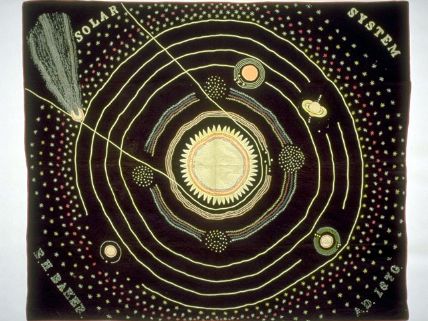As COVID-19 deaths spiked in 2020, Suzanne Firstenberg’s public art installation "In America: How could this happen…"
History Explorer Results (14)
Related Books (0)

Grade Range:
K-12
Resource Type(s):
Artifacts
Date Posted:
1/2/2022
For decades, teachers drilled American school children using flash cards that gave simple arithmetic problems. The advent of inexpensive electronic calculators in the 1970s made it possible to do much routine arithmetic automatically. To teach school children the meaning of basic operations, new dev

Grade Range:
K-12
Resource Type(s):
Artifacts
Date Posted:
1/2/2022
During the late 1950s and 1960s, American scientists and educators proposed using machines for instruction. Teaching machines and related programmed textbooks used a careful sequence of questions for teaching. Jerome C. Meyer and later William R. Hafel, both of Sunnydale, California, believed that i
Grade Range:
9-12
Resource Type(s):
Lessons & Activities
Date Posted:
5/1/2018
American Democracy: A Great Leap of Faith traces the unfolding of America’s experiment with government “of, by, and for the people” and illustrates the fact that democracy involves civic engagement and participation.
This exhibition and its

Grade Range:
K-12
Resource Type(s):
Artifacts
Date Posted:
4/16/2018
Since the 1950s, demand has soared in the United States for cookbooks featuring diverse ethnic cuisines. Reflecting a heightened interest in foods and flavors from various cultures, the explosion of ethnic cookbooks—and ethnic restaurants and markets—serves to educate the general public while

Grade Range:
8-12
Resource Type(s):
Reference Materials
Date Posted:
3/23/2018
James Smithson might be surprised to learn about some of the objects in the collections at the institution he established. The Englishman bequeathed his fortune to found "at Washington, under the name of the Smithsonian Institution, an Establishment for the increase & diffusion of knowledge a

Grade Range:
6-12
Resource Type(s):
Artifacts
Date Posted:
2/8/2016
People have long sought better ways to illustrate and understand the structure and functions of the human body. Paper dolls and wax, papier-mache, and plaster anatomical models have all been used as tools to teach human anatomy. In the wake of the launch of the Sputnik satellite, designer Marcel

Grade Range:
9-12
Resource Type(s):
Interactives & Media, Lessons & Activities
Date Posted:
6/19/2015
Abraham Lincoln is typically portrayed as a gaunt, bearded man, both thoughtful and troubled. The story that goes along with this image is as familiar to Americans as any children’s fable. He was born in a log cabin. He became the 16th president. He freed the slaves and saved the Union. He was

Grade Range:
K-12
Resource Type(s):
Artifacts, Primary Sources
Date Posted:
5/3/2012
This apparatus was designed by Catherine Stern, a physicist by training and the founder of a Montessori school in her native Germany. Stern and her husband were of Jewish descent, and emigrated to New York City in 1938 to avoid persecution by the Nazis. There she developed these materials, descri

Grade Range:
K-12
Resource Type(s):
Artifacts, Primary Sources
Date Posted:
3/28/2012
This "Solar System" quilt was made by Ellen Harding Baker of Cedar County, Iowa, in 1876. The wool top of this applique quilt is embellished with wool-fabric applique, wool braid, and wool and silk embroidery. Included in the design is the appliqued inscription, "Solar System," and the embroidere

Grade Range:
6-12
Resource Type(s):
Interactives & Media
Duration:
3 minutes
Date Posted:
3/23/2012
Meet Steven Turner, curator at the Smithsonian's National Museum of American History, as he discusses the Smithsonian's scientific instrument collection. This video focuses models used to represent the movement of sound waves, including demonstrations of wave models by Kohl, Ricky, and Crova, as









